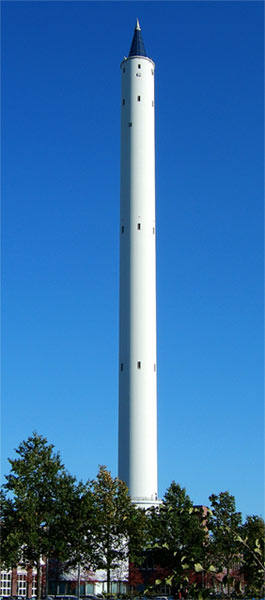Fallturm Bremen on:
[Wikipedia]
[Google]
[Amazon]
 Fallturm Bremen is a drop tower at the Center of Applied Space Technology and Microgravity at the
Fallturm Bremen is a drop tower at the Center of Applied Space Technology and Microgravity at the
Ghostarchive.org
on 27 April 2022 Towers in Germany
Buildings and structures in Bremen (city)
Weightlessness
{{Bremen-struct-stub
Towers in Germany
Buildings and structures in Bremen (city)
Weightlessness
{{Bremen-struct-stub
 Fallturm Bremen is a drop tower at the Center of Applied Space Technology and Microgravity at the
Fallturm Bremen is a drop tower at the Center of Applied Space Technology and Microgravity at the University of Bremen
The University of Bremen () is a public university in Bremen, Germany, with approximately 18,400 students from 117 countries. Its 12 faculties offer more than 100 degree programs.
The University of Bremen has been among the top 50 European rese ...
in Bremen
Bremen (Low German also: ''Breem'' or ''Bräm''), officially the City Municipality of Bremen (, ), is the capital of the States of Germany, German state of the Bremen (state), Free Hanseatic City of Bremen (), a two-city-state consisting of the c ...
. It was built between 1988 and 1990, and includes a 122-metre-high drop tube (actual drop distance is 110 m), in which for 4.74 seconds (with release of the drop capsule), or for over 9 seconds (with the use of a catapult
A catapult is a ballistics, ballistic device used to launch a projectile at a great distance without the aid of gunpowder or other propellants – particularly various types of ancient and medieval siege engines. A catapult uses the sudden rel ...
, installed in 2004) weightlessness
Weightlessness is the complete or near-complete absence of the sensation of weight, i.e., zero apparent weight. It is also termed zero g-force, or zero-g (named after the g-force) or, incorrectly, zero gravity.
Weight is a measurement of the fo ...
can be produced. The entire tower, formed out of a reinforced concrete
Concrete is a composite material composed of aggregate bound together with a fluid cement that cures to a solid over time. It is the second-most-used substance (after water), the most–widely used building material, and the most-manufactur ...
shank, is 146 metres high.
The 122-metre drop tube is free-standing within the concrete shell, in order to prevent the transmission of wind-induced vibration
Vibration () is a mechanical phenomenon whereby oscillations occur about an equilibrium point. Vibration may be deterministic if the oscillations can be characterised precisely (e.g. the periodic motion of a pendulum), or random if the os ...
s, which could otherwise result in the airtight drop capsule hitting the walls. The drop tube is pumped down prior to every free-fall experiment to about 10 Pa (~ 1/10 000 atmosphere
An atmosphere () is a layer of gases that envelop an astronomical object, held in place by the gravity of the object. A planet retains an atmosphere when the gravity is great and the temperature of the atmosphere is low. A stellar atmosph ...
). Evacuation takes about 1.5 hours.
In 2021, German and French scientists at the drop tube managed to produce and record the lowest temperature ever measured. Using quantum gas, they managed to achieve 38 trillionths of a degree above absolute zero
Absolute zero is the lowest possible temperature, a state at which a system's internal energy, and in ideal cases entropy, reach their minimum values. The absolute zero is defined as 0 K on the Kelvin scale, equivalent to −273.15 ° ...
.
References
External links
* , ZARM (Center of Applied Space Technology and Microgravity), University of Bremen * * Tom Scott, , 16 January 2017 archived aGhostarchive.org
on 27 April 2022
 Towers in Germany
Buildings and structures in Bremen (city)
Weightlessness
{{Bremen-struct-stub
Towers in Germany
Buildings and structures in Bremen (city)
Weightlessness
{{Bremen-struct-stub